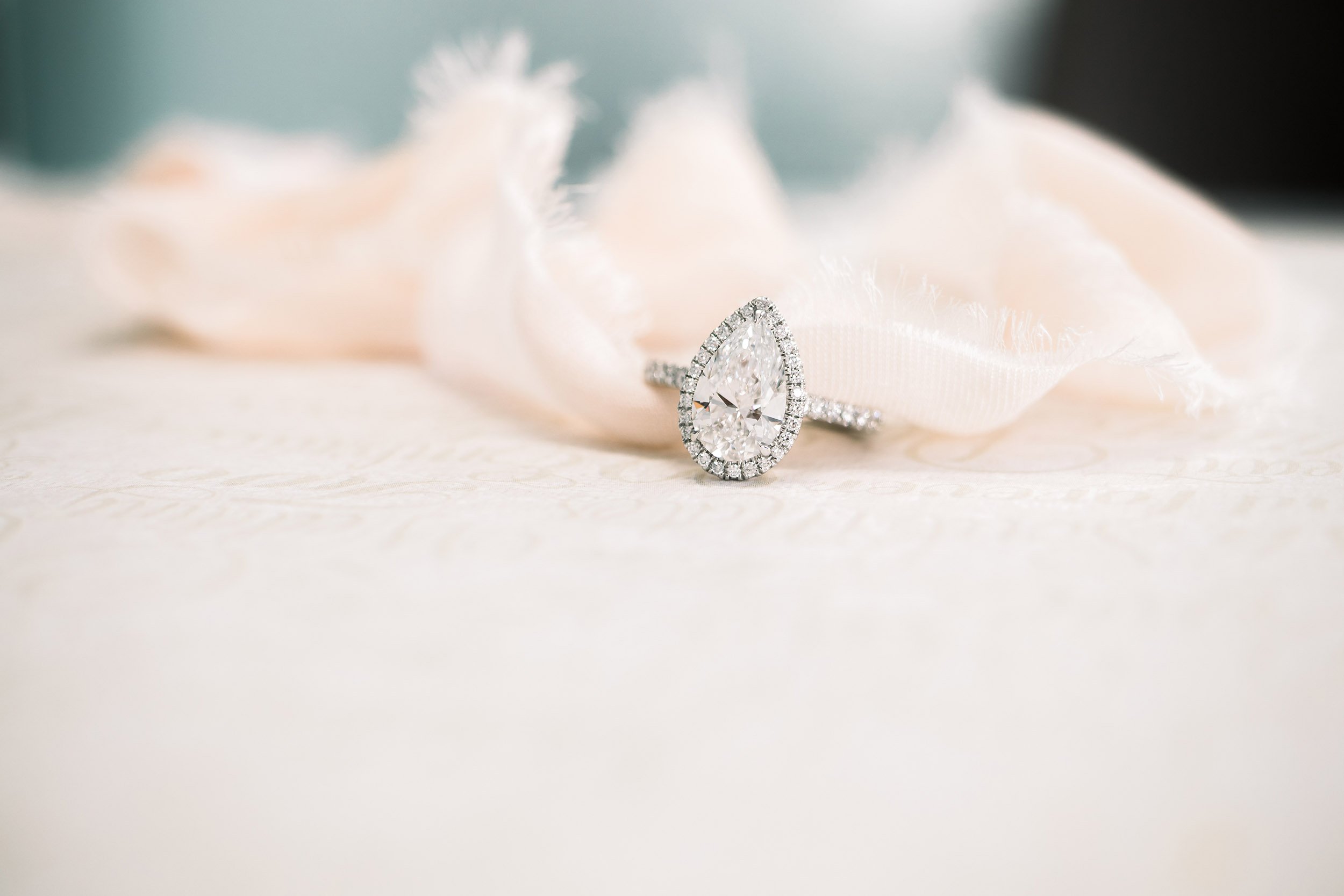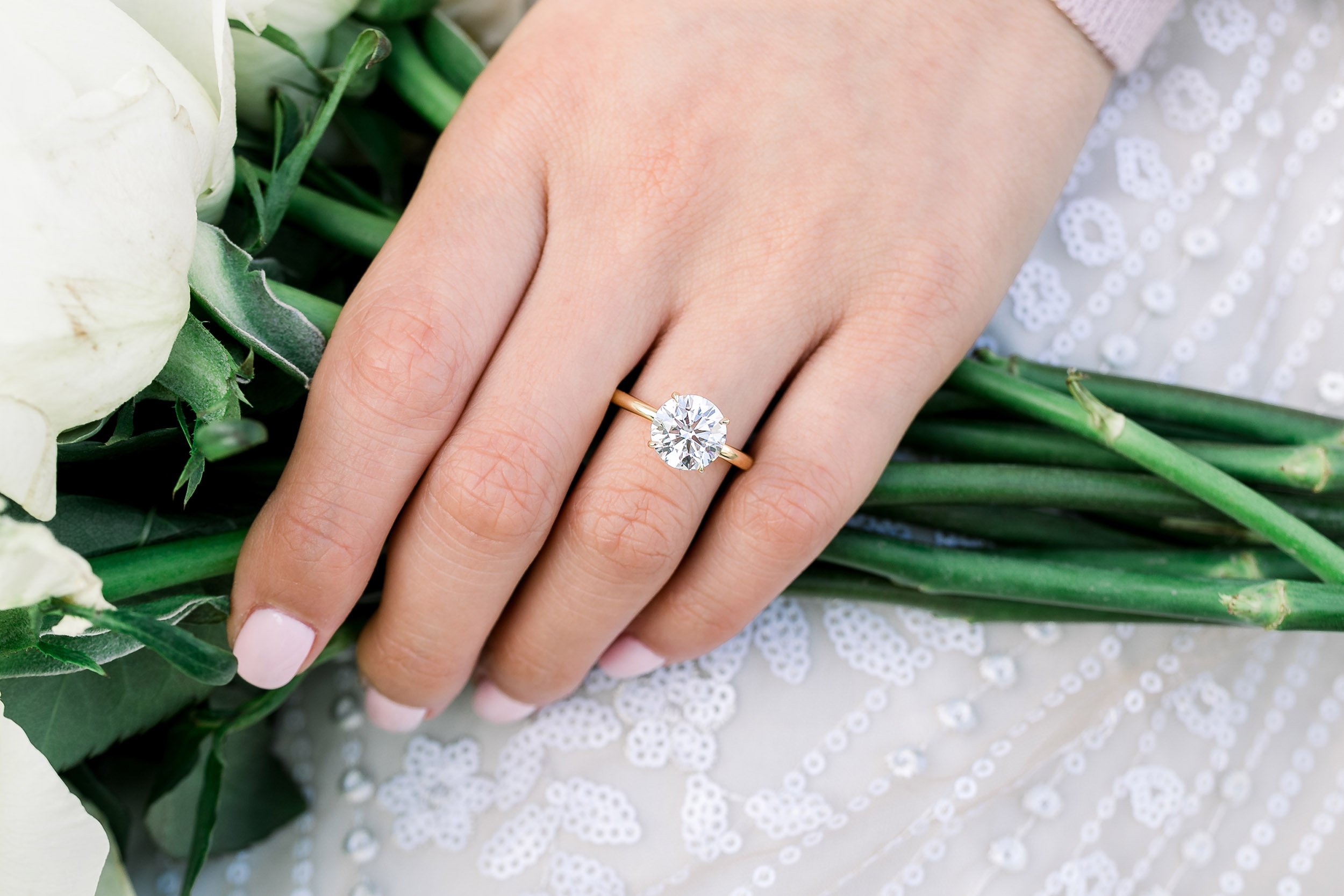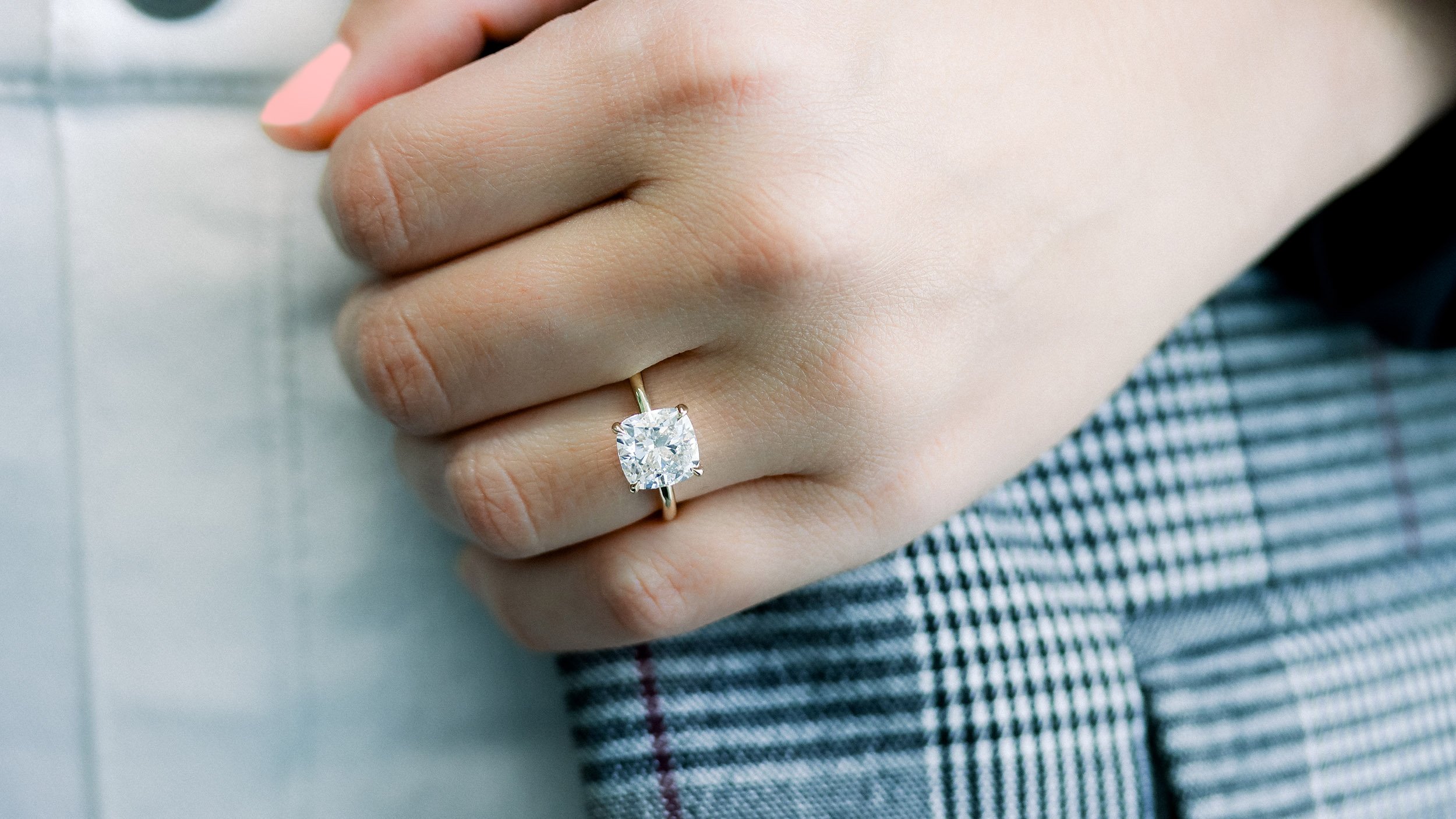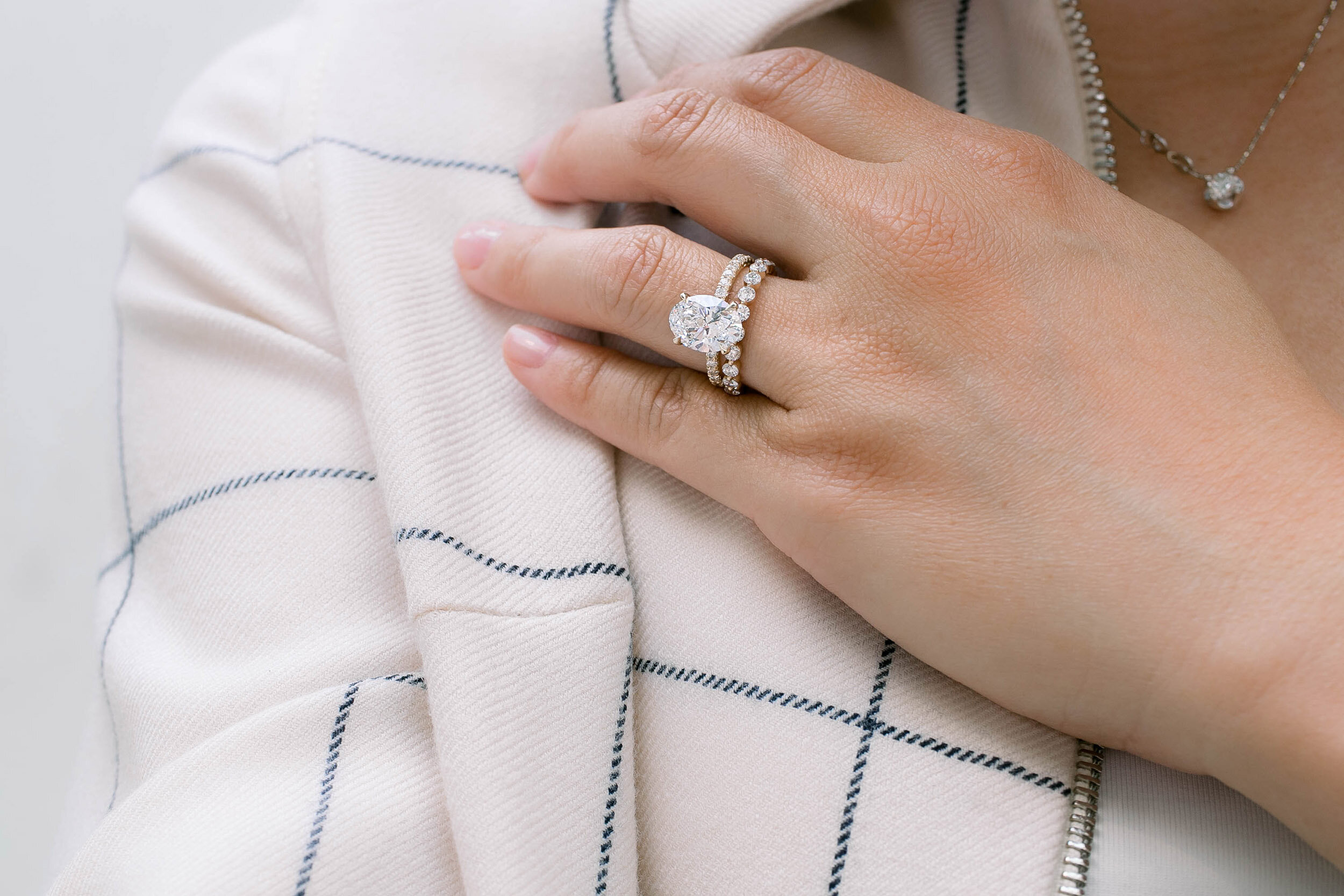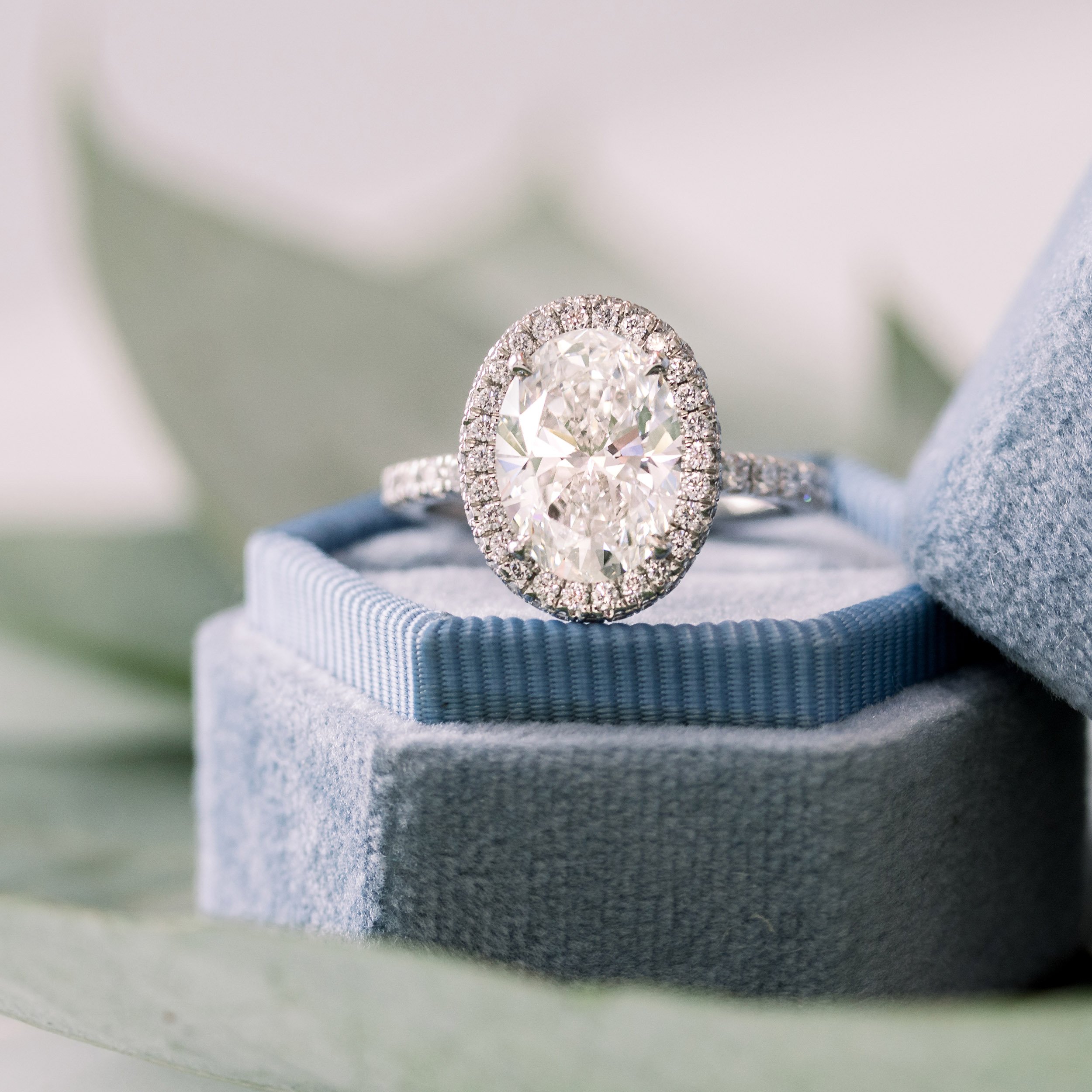Frequently Asked Questions about Lab Grown Diamonds
Are Man-made, Synthetic, or Lab Grown Diamonds Real?
Yes. Laboratory-grown diamonds are real and are not fake diamonds. Our man-made diamonds have indistinguishable chemical and optical properties when compared to mined diamonds, even to an expert gemologist using traditional jeweler's tools. Lab created diamonds are grown by recreating the conditions underneath the Earth that result in diamond growth: pressure, heat, & carbon. Learn more about why lab diamonds are not fake.
Lab grown diamonds are not the same thing as diamond simulants such as cubic zirconia, moissanite, or a CZ with a diamond like carbon (DLC) coating. Learn more about lab diamonds vs diamond simulants.
Is a Cubic Zirconia (CZ) the Same Thing as a Lab Grown Diamond?
No. Diamonds are made entirely from carbon, whereas cubic zirconia contains zero carbon! CZs are much weaker than diamonds and have different light performance and patterning. Any jeweler can easily tell the difference between a diamond and an inferior diamond simulant such as CZ or moissanite.
Is a Synthetic Diamond the Same Thing as a Lab Grown Diamond?
Yes. Laboratory grown diamonds can be referred to as lab created diamonds, grown diamonds, synthetic diamonds, man-made diamonds, cultivated diamonds, or cultured diamonds. That being said, Ada Diamonds believes that synthetic is a scientifically inaccurate term for laboratory grown diamonds.
Can a Jeweler Tell That a Diamond is Lab Grown?
No, a jeweler cannot tell the difference between an Ada diamond and a natural diamond. A CNBC reporter took an Ada Diamonds ring to multiple 'We Buy Diamonds' businesses in the New York Diamond District (47th Street), and not one of the diamond purchasers detected that the diamond was man-made.
That being said, there are lab diamonds on the market that contain obvious defects, such as color tinges from impurities in the diamond or crystal structure dislocations from poor quality diamond seeds. These defects make lab created diamonds easy to differentiate from natural diamonds. Ada Diamonds screens all of our diamonds for these material issues and doesn’t sell lab diamonds with unnatural, problematic characteristics.
Ada Diamonds is proud of the origin of our diamonds. We refuse to sell mined diamonds, as we believe lab diamonds are more sustainable, ethically superior, and an investment in the future. All of our diamonds above 0.50ct are microscopically laser inscribed by third party grading organizations with a unique ID number and the letters ‘LG’ to indicate the diamond is lab grown.
How Do You Grow a Lab Diamond?
By recreating the conditions underneath the Earth that result in diamond growth: pressure, heat, & carbon.
Today, there are two methods of growing diamond gemstones: High Pressure-High Temperature (HPHT) & Chemical Vapor Deposition (CVD). Each process is best suited for certain sizes & colors of diamonds. Learn more about growing diamonds.
How Long Does it Take to Grow a Diamond?
It takes 7-10 days to grow a 1 carat lab diamond, and about a month to grow a 3 carat diamond.
If you try to grow a diamond faster, the diamond crystal will fracture or develop voids, producing a grown/gray color. Thus, there is a physical speed limit to how fast you can grow diamonds.
Are All Lab Diamonds Flawless and Perfect?
No. Because diamonds are grown by recreating the conditions of nature, lab grown diamonds have the same variations of color and clarity that exist in natural diamonds (the 4Cs).
Lab diamonds still range across the color and clarity spectrum, just like mined diamonds. Ada Diamonds chooses to only work with diamonds that are G+ better in color and VS2+ better in clarity. Just like mined diamonds, lab diamonds can vary in their quality even beyond the 4Cs, so it’s imperative that a lab diamond expert inspect your diamond before purchase. You should never buy a lab diamond completely sight unseen. Learn more about good vs bad lab diamonds.
Are Lab Diamonds Cheaper than Mined Diamonds?
Yes. Lab created diamonds tend to retail at a ~70% discount off of equivalent quality natural diamonds. Lab grown diamonds are priced based on their quality, just like mined diamonds.
We often get asked "how much is a 2 carat lab diamond?" and the answer is, it depends on the quality, just like mined diamonds. Learn more about lab diamond pricing.
Are Lab Diamonds Graded by Third Party Organizations?
Yes. Nearly all lab diamonds above 0.50ct are graded and certified by reputable non-profit gemological laboratories such as AGS, GIA, IGI, or GCAL. We always recommend purchasing a lab diamond that has an independent certification.
Ada will always share the grading report with any diamond we offer to our clients and those reports can be verified by looking up the ID on the grading organization's web site. Ada does not sell diamonds sight unseen; rather, we visually inspect every single diamond we sell for verification of its quality. If we believe a diamond received a liberal grading, we will not sell it.
Does GIA grade lab diamonds?
Yes. Ada Diamonds proudly offers GIA-graded lab diamonds. If a lab diamond you have reserved currently has an IGI or GCAL report, we are happy to send it for secondary GIA grading. Some fees may apply. Learn more about lab diamond grading.
Can I Get a Lab Diamond Appraised and Insured?
Yes. Laboratory-grown diamonds are easily appraised and insured, just like mined diamonds. Ada's fine jewelry comes with a full appraisal and many of our clients choose to insure their jewelry from our insurance provider, Jeweler's Mutual Insurance. Progressive jewelry appraisers, such as American Gem Registry, will gladly appraise lab diamond jewelry.
Can I Resell a Lab Grown Diamond?
Yes.
Ada Diamonds will gladly purchase laboratory-grown diamonds from our past clients through our Buy-Back Program. Furthermore, Ada offers a Lifetime Trade-In for our clients who would like to upgrade to a larger diamond.
Because lab diamond gemstone sales are relatively new, there are not as many outlets that will buy back a lab grown diamond, yet. IE pawn shops, diamond liquidators, and traditional jewelers many not yet buy lab diamonds at the rate that they purchase mined diamonds; however, that is changing as the industry grows. For example, one of the largest online diamond brokers in the world recently started allowing sales of lab diamonds on its network.
It is important to note that both grown & mined diamonds do not increase in value over time, relative to inflation, and should not be considered a place to "park" your money.
Ada Diamonds advises our clients to view their lab diamond purchase as a luxury, discretionary purchase, not an investment. You should never expect to be able to sell your diamond for more or the same of what you originally paid for it at retail, whether natural or lab grown, relative to inflation. This is because retailers who buy your diamond from you have to be able to resell that stone for a profit.
Do Lab Diamonds Change Color Over Time?
No. Laboratory-grown diamonds do not fade, discolor or cloud over time. Learn more about lab diamond stability.
Does Ada Diamonds Grow its Own Diamonds?
No, Ada Diamonds does not grow its own diamonds. Rather, we purchase the best lab diamonds from diamond growers around the world. We are discerning lab diamond experts and we reject over 85% of the lab diamond market as beneath our quality standards.
Because Ada is a leading retailer of exceptional lab grown diamonds, we often have access to diamonds that other retailers do not, allowing Ada to deliver the best of the best to our clients. Learn more about Ada's concierge process.
Where are Lab Diamonds Grown?
Diamonds are grown all over the world in high-tech facilities staffed by scientists, engineers, and technicians. West to East, here are locations of commercial diamond growth:
United States
Canada
United Kingdom
France
Belgium
Netherlands
Germany
Ukraine
Israel
India
China
Singapore
Japan
Ada Diamonds truly believes that it matters where your diamonds comes from and that the purchase of a lab diamond is an investment in the future. The cost to produce lab diamonds is much higher than the cost to mine them, as lab diamonds are produced in western nations where employees receive full benefits and clean, safe working conditions. Learn more about the production of lab diamonds.
Are Lab Diamonds Environmentally Superior to Earth-Mined Diamonds?
Yes, it is sustainable to grow diamonds with abundantly available carbon and renewable energy. Growing diamonds is certainly energy intensive; however, the impact on the earth to grow diamonds is a fraction of the impact of diamond mining.
It requires approximately 250 kilowatt hours of electricity to grow a 1 carat diamond. That same amount of electricity could power the average US household for 9 days or allow you to drive a Tesla Model S approximately 700 miles.
Learn more about the energy consumption and environmental impact of lab diamonds vs mined diamonds and why diamond mining is becoming less sustainable every year.
Are You Ready to Join the Future of Fine Jewelry?
An Ada Diamonds Concierge is standing by to help you build something beautiful.
Get started on a one-of-a-kind bespoke piece featuring the world's best diamonds.









